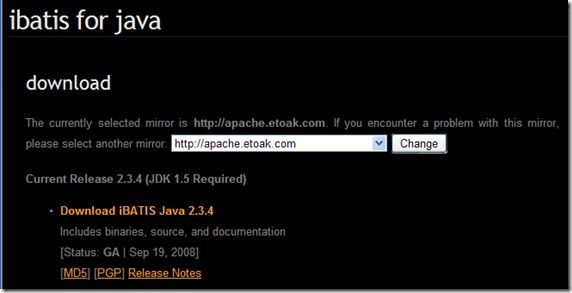- ZED相机与Foxglove集成:加速机器人视觉调试效率的实用方案
随着机器人技术的发展,实时视觉数据流的高效传输和可视化成为提升系统性能的重要因素。通过ZED相机(包括ZED2i和ZEDX)与FoxgloveStudio平台的结合,开发者能够轻松访问高质量的2D图像、深度图和点云数据,从而显著提高感知系统的调试效率。实时可视化价值数据监控ZED相机与Foxglove的集成使得开发者可以在Foxglove平台上查看高分辨率的2D图像、深度图和点云数据。这种能力让团
- windbg使用教程(调试异常及死锁等)
哈市雪花
调试windbgDMP异常死锁windows调试
1.背景最近由于线上的程序发生了死锁,而且重现的概率很低,正好客户反馈一个任务超时了,登上线上环境发现有一个“僵尸”进程,占用内存不波动,cpu仍在占用,那么用创建转储文件,用windbg调试吧。2.准备2.1.下载windbg需要下载Windows调试工具(WinDbg):Windows10SDK,安装时候根据需要,可以只安装DebuggingToolsForWindows,即windbg;如果
- AABB包围盒和OBB包围盒区别
哈市雪花
图形学AABBOBB包围盒图形学boundingbox
1.问题图形学中经常出现AABB包围盒、OBB包围盒、包围球等,这些概念初次接触时有点容易混淆;2.概念AABB:Axis-AlignedBoundingBox,轴对齐包围盒;OBB:OrientedBoundingBox,有向包围盒;包围球:外接球;OBB比包围球和AABB更加逼近物体,能显著减少包围体的个数3.其他类似的概念还有凸包、最小外接轮廓等,有兴趣的可以查阅相关资料。
- 如何为工业相机匹配最佳镜头
51camera
机器视觉产品资料查询平台工业相机工业镜头工业相机
工业镜头选型为什么重要?工业镜头与普通相机镜头不同,它的核心任务是满足高精度、稳定性、环境适应性等严苛需求。选型不当可能导致:成像模糊:影响缺陷检测或尺寸测量精度;成本浪费:高价镜头无法适配实际场景;系统卡顿:镜头与相机、光源不匹配,拖慢处理速度。选型要精准匹配需求。在工业自动化、机器视觉、智能检测等领域,工业镜头作为工业相机的“眼睛”起着重要作用,选择合适的镜头才能让成像更精准、高效。那么如
- Spinnaker 4 SDK助力扩展多工业相机成像系统
51camera
工业相机机器视觉产品资料查询平台工业相机
扩展多相机成像系统是系统集成商和机器制造商面临的一项技术挑战。网络拥堵、CPU过载、同步错误以及配置复杂性等问题常常会给成功构建包含大量GigE相机的系统造成诸多阻碍。最近,Teledyne通过交换机将40多台GigE相机连接到一台PC,成功运行了相机系统。即使在极限压力下,系统依然连续运行了数天,期间没有出现帧丢失或错误。这一成就得益于Spinnaker4SDK,它基于TeledyneGigE框
- 看不见的光,看得见的细节:短波红外工业相机的神秘力量!
51camera
工业相机短波红外相机
随着市场需求的挖掘和机器视觉技术的发展,短波红外工业相机在工业、医疗、食品等领域的应用越来越广泛。其中半导体检测和食品检测是两大主要应用市场,占据较大的市场份额。今天我们来看看短波红外相机。短波红外(Short-WaveInfrared简称SWIR,通常指0.9~1.7μm波长的光线)是一种比可见光波长更长的光。这些光不能通过“肉眼”看到,也不能用“普通相机”检测到。由于被检测物体的材料特性,一些
- Python Amazon Web Services编程库之boto3使用详解
Rocky006
python开发语言人工智能
概要boto3是AmazonWebServices(AWS)的官方Python软件开发工具包(SDK),为开发者提供了从Python应用程序访问和管理AWS服务的简单方式。作为AWS生态系统的重要组成部分,boto3提供了对AmazonS3、EC2、DynamoDB等几乎所有AWS服务的编程访问。该库采用面向对象的API设计,不仅使基本操作变得直观,还支持高级功能如资源抽象、数据分页和并发操作。安
- 扫描电镜能谱分析入门:扫描电镜不仅能看,还能“查成分”
扫描电镜
扫描电镜扫描电子显微镜科研扫描电镜推荐
扫描电镜能谱分析入门:扫描电镜不仅能看,还能“查成分”掌握EDS,从一张黑白图到微观化学地图的跃迁引言:黑白图像之外,还有哪些信息?在扫描电子显微镜(SEM)中,你或许已经熟悉了放大图像的纹理与结构。但仅靠形貌还不够,我们还需要知道:这是什么材料?都有哪些元素?分布在哪里?这就是能谱分析(EDS)登场的时刻。配合SEM,EDS让我们从“看图”进入“读谱”的阶段,打通形貌与成分之间的桥梁,是现代微纳
- GPT在AI原生应用领域的无限潜力
GPT在AI原生应用领域的无限潜力关键词:GPT、AI原生应用、自然语言处理、无限潜力、应用场景摘要:本文深入探讨了GPT在AI原生应用领域所展现出的无限潜力。首先介绍了相关背景知识,包括GPT的基本概念和AI原生应用的定义。接着详细解释了GPT的核心概念,以及它与AI原生应用的紧密联系。通过数学模型和公式对GPT的工作原理进行了阐述,并给出了实际的代码案例。还探讨了GPT在多个实际应用场景中的表
- 40 岁想学中医怎么开始?过来人的经验分享 问止精一书院
2501_92067291
问止中医
零基础学中医学中医如何入门免费学中医!问止精一书院链接:https://tool.nineya.com/qrcode/1iv54b4ts不少人到了40岁,对中医产生浓厚兴趣,却不知该如何起步。作为一名从40岁开始学中医的过来人,我想分享一些实用经验,尤其推荐以问止中医的免费课程作为入门跳板。40岁学中医,最大的顾虑往往是“零基础怕跟不上”。问止中医的免费报名课程恰好解决了这个痛点,课程专为中医小白
- 人工智能赋能气象气候:从数据智能到预测创新的融合之路
慌ZHANG
人工智能人工智能
个人主页:慌ZHANG-CSDN博客期待您的关注一、引言:气象气候与AI的“天然耦合”气象与气候系统是典型的复杂、多尺度、强非线性的自然系统,其建模、分析与预测依赖庞大观测数据和高性能计算资源。传统方法以数值天气预报(NWP)与物理建模为核心,虽然取得重要成就,但也面临计算代价大、精度不足、长期预测偏差大等瓶颈。与此同时,人工智能(AI),尤其是以深度学习为代表的机器学习方法,近年来在图像识别、自
- 【机器学习|学习笔记】类别特征(Categorical Features)处理方法,附代码。
努力毕业的小土博^_^
机器学习学习笔记机器学习学习笔记神经网络人工智能深度学习
【机器学习|学习笔记】类别特征(CategoricalFeatures)处理方法,附代码。【机器学习|学习笔记】类别特征(CategoricalFeatures)处理方法,附代码。文章目录【机器学习|学习笔记】类别特征(CategoricalFeatures)处理方法,附代码。前言✅为什么要处理类别特征?原因1:大多数模型不能处理字符串原因2:避免“错误的顺序假设”原因3:方便模型泛化与特征交互✅
- stm32达到什么程度叫精通?
STM32达到什么程度叫精通?一个十年老兵的深度反思前言:精通二字,重如泰山每次有人问我"STM32达到什么程度叫精通"这个问题,我都会沉默很久。不是因为这个问题难回答,而是因为"精通"这两个字太重了。重到让我这个在嵌入式领域摸爬滚打了近十年的老兵,都不敢轻易说出口。2014年,我刚从机械专业毕业,怀着忐忑不安的心情走进厦门某马的大门。那时候的我,连STM32是什么都不知道,更别说什么精通了。现在
- 【赵渝强老师】Oracle RMAN的目录数据库
数据库oraclerman
在默认情况下,OracleRMAN将备份时产生的元信息保存到控制文件中。RMAN在执行恢复时,就需要读取控制文件,从而找到备份的信息来完成数据库的恢复。因此,如果控制文件发生了丢失和损坏将导致数据库无法执行恢复。另一方面随着备份的不断增多,也会导致控制文件的大小无限增长。为了更好地管理RMAN备份的元信息,Oracle可以使用一个专门的备份信息存储地来存储这些信息,这就是RMAN的目录数据库(Ca
- Python中使用Graphviz绘制决策树图解
黃昱儒
本文还有配套的精品资源,点击获取简介:Graphviz是一款用于数据可视化和算法流程展示的图形绘制软件,特别适用于Python中绘制决策树和其他图形类型。本安装包包含Graphviz安装程序和配置指南,以及如何在Python中利用pydot库等第三方库进行图形绘制的详细步骤。通过配置环境变量和利用DOT语言,用户可以将决策树模型转换为可视化图形,加深对机器学习模型的理解和调试。1.Graphviz
- PHP+Web进销存管理系统源码部署教程:快速搭建企业级ERP软件
typescript
在数字化转型浪潮下,企业对高效管理进销存流程的需求愈发迫切。基于PHP+Web的进销存管理系统,凭借其开源性、灵活性和跨平台优势,成为众多企业搭建ERP软件的首选方案。本文将详细介绍该系统源码的部署流程,助你快速搭建适合企业需求的ERP软件。进销存源码及展示:c.csymzs.top一、部署前的准备工作(一)服务器环境准备1.服务器类型云服务器(推荐):阿里云ECS、腾讯云CVM、AWSEC2:支
- 【第三章】摄影测量学
啊有礼貌
测绘学概论数码相机摄影测量倾斜测量空中三角测量
概述摄影测量概念:通过摄影的手段获得对物体可靠量测的科学与技术利用立体像对影像之间的移位构建立体模型,进行测量由二维影像到三维实体的科学技术重要方法:利用立体像对与一对浮动测标进行立体观测,测定同名点点云表示三维空间中点的集合的数据结构,包含三维坐标、有时还包含颜色信息、强度信息、法线向量等具有高密度、无序性、多维度、灵活性左右视差较/横视差较:在立体像对上,某点的左右视差相对于作为基准点像点的左
- Python工程师面试题集
木鱼时刻
软件开发python开发语言
文章目录一、Python基础二、关键Python库三、Web开发四、并发与性能五、系统设计答案区一、Python基础Python的可变与不可变数据类型有哪些?底层实现原理?Python2与Python3的主要区别解释GIL全局解释器锁及其对多线程的影响装饰器Decorator的作用与实现原理二、关键Python库Pandas的核心作用及数据结构常用Pandas操作与缺失值处理百万级数据优化技巧Nu
- 按键精灵支持安卓14、15系统,兼容64位环境开发辅助工具
ii_best
android
随着安卓系统的不断升级,安卓14和安卓15为用户带来了更强大的功能和更出色的性能。对于希望通过脚本实现自动化操作的用户来说,按键精灵在这两个新系统上的支持情况备受关注。本文将深入探讨按键精灵如何在安卓14和安卓15系统中发挥作用,为你开启高效自动化的大门。安卓14:稳定与兼容的典范安卓14以其卓越的稳定性和广泛的兼容性著称。在这个版本中,系统对各种应用的支持更加完善,无论是日常办公使用的文档编辑软
- 【深度学习|冰川制图9】GlacierNet2:一种面向高山冰川制图的混合多模型学习架构
努力毕业的小土博^_^
优秀论文推荐深度学习学习架构
【深度学习|冰川制图9】GlacierNet2:一种面向高山冰川制图的混合多模型学习架构【深度学习|冰川制图9】GlacierNet2:一种面向高山冰川制图的混合多模型学习架构文章目录【深度学习|冰川制图9】GlacierNet2:一种面向高山冰川制图的混合多模型学习架构结果与讨论3.1消融区制图欢迎铁子们点赞、关注、收藏!祝大家逢考必过!逢投必中!上岸上岸上岸!upupup大多数高校硕博生毕业要
- AI原生应用开发必知:事件驱动架构的10个最佳实践
AI原生应用开发
AI-native架构ai
AI原生应用开发必知:事件驱动架构的10个最佳实践关键词:AI原生应用、事件驱动架构、微服务、消息队列、异步处理、可扩展性、实时数据处理摘要:本文深入探讨了AI原生应用开发中事件驱动架构的10个最佳实践。我们将从基本概念出发,逐步分析事件驱动架构在AI应用中的优势,并通过实际代码示例展示如何实现这些最佳实践。文章涵盖了从设计模式到实际部署的全过程,旨在帮助开发者构建高性能、可扩展的AI应用系统。背
- 应用服务器监控方案:精准预警,快速响应
Simon丶XM
运维知识库linux自动化服务器运维网络
应用服务器监控方案:精准预警,快速响应背景在应用系统正式发布并投入运行后,系统可能会因多种潜在问题而遭遇宕机或陷入假死状态。特别是在生产环境中,一旦出现此类故障,若管理员未能迅速察觉并立即组织运维团队进行修复,将可能给客户带来不便,同时给公司造成重大经济损失及声誉损害。传统上,依赖人工实时监控应用系统虽为一种手段,但其高昂的成本及对监控人员专业技能的高要求,使得这一方法并非最优选择。鉴于此,探索并
- Linux基础IO——文件系统与动静态库
栖林_
Linuxlinux运维服务器
文章目录什么是文件系统磁盘的物理结构扇区中的块组软硬链接硬链接软连接动静态库生成静态库使用静态库生成动态库使用动态库什么是文件系统我们之前所说的文件读写都是通过进程对已经打开的文件进行操作,也就是对操作系统对文件所创建的结构体进行操作那么对于磁盘中没有打开的文件是如何进行管理的磁盘的物理结构这里我们主要讨论机械磁盘而非固态磁盘,因为机械磁盘的价格较低,而且学习之后也能更好的理解整个系统这是机械硬盘
- 目标检测新纪元:DETR到Mamba实战解析
加油吧zkf
图像处理python分类人工智能目标检测
【实战分享】目标检测的“后DEⱯ”时代:DETR/DINO/RT-DETR及新型骨干网络探索(含示例代码)目标检测从YOLO、FasterR-CNN到Transformer结构的DETR,再到DINO、RT-DETR,近两年出现了许多新趋势:更高效的端到端结构、更少的手工设计(比如不再需要NMS)、以及新型轻量化骨干网络(比如Mamba、ConvNeXt、ViT等)被引入检测任务中。作为从事目标检
- Python内置函数--reversed()
它将一个序列作为输入,并返回另一个序列,其中元素的顺序与给定输入序列的顺序相反。它不会对原始序列产生任何影响。也就是在原列表的基础上返回一个新的反向列表。粗略的看看classreversed(Iterator[_T],Generic[_T]):@overloaddef__init__(self,__sequence:Reversible[_T])->None:...@overloaddef__in
- NumPy-核心函数np.matmul()深入解析
GG不是gg
numpynumpy
NumPy-核心函数np.matmul深入解析一、矩阵乘法的本质与`np.matmul()`的设计目标1.数学定义:从二维到多维的扩展2.设计目标二、`np.matmul()`核心语法与参数解析函数签名核心特性三、多维场景下的核心运算逻辑1.二维矩阵乘法:基础用法2.一维向量与二维矩阵相乘3.高维数组:批次矩阵乘法4.广播机制下的形状匹配四、与`np.dot()`和`*`运算符的核心区别1.对比`
- win10python2.7安装_Win10下python 2.7.13 安装配置方法图文教程
weixin_39569051
本文记录了Windows10安装Python2.7的详细步骤,分享给大家。一、下载软件Python的官方地址点击Downloads找到进行下载点击进行下载、有18M左右下载地址:链接地址二、安装软件下载之后点击安装勾选第一项点击下一步点击下一步点击下一步等几分钟就好了。安装完成、点击Finish。三、配置环境安装后之后需要把Python的路径添加到环境变量中去、右键单击【计算机】,选择菜单属性命令
- python模拟内置函数reversed_Python内置函数reversed
weixin_39594895
{"moduleinfo":{"card_count":[{"count_phone":1,"count":1}],"search_count":[{"count_phone":4,"count":4}]},"card":[{"des":"阿里技术人对外发布原创技术内容的最大平台;社区覆盖了云计算、大数据、人工智能、IoT、云原生、数据库、微服务、安全、开发与运维9大技术领域。","link1":
- python2.7下载哪个_Python2.7.13下载安装全过程(Windows版)
weixin_39615984
python2.7下载哪个
前提:我下载的Python是windows版本的,演示过程是在win1064位操作系统上安装的。1、下载进入官网https://www.python.org/,找到Dowdloads,根据所需下载对应版本,如下图所示:这是我下载的版本:下载完成之后,双击exe文件,即可开始安装。2、安装安装操作非常简单,基本就是点击下一步,直到完成即可。如下图所示:3、环境变量的配置我们需要找到系统环境变量Pat
- Agno(一)
一、基本功能介绍Agno是一个python框架,用于构建具有共享内存、知识和推理的多代理系统。工程师和研究人员使用Agno构建:1级:带有工具和说明的代理2级:具有知识和存储的代理3级:具有记忆和推理能力的代理4级:可以推理和协作的代理团队5级:具有状态和确定性的代理工作流例:使用YFinanceAPI回答问题的1级推理代理:fromagno.agentimportAgentfromagno.mo
- Linux的Initrd机制
被触发
linux
Linux 的 initrd 技术是一个非常普遍使用的机制,linux2.6 内核的 initrd 的文件格式由原来的文件系统镜像文件转变成了 cpio 格式,变化不仅反映在文件格式上, linux 内核对这两种格式的 initrd 的处理有着截然的不同。本文首先介绍了什么是 initrd 技术,然后分别介绍了 Linux2.4 内核和 2.6 内核的 initrd 的处理流程。最后通过对 Lin
- maven本地仓库路径修改
bitcarter
maven
默认maven本地仓库路径:C:\Users\Administrator\.m2
修改maven本地仓库路径方法:
1.打开E:\maven\apache-maven-2.2.1\conf\settings.xml
2.找到
- XSD和XML中的命名空间
darrenzhu
xmlxsdschemanamespace命名空间
http://www.360doc.com/content/12/0418/10/9437165_204585479.shtml
http://blog.csdn.net/wanghuan203/article/details/9203621
http://blog.csdn.net/wanghuan203/article/details/9204337
http://www.cn
- Java 求素数运算
周凡杨
java算法素数
网络上对求素数之解数不胜数,我在此总结归纳一下,同时对一些编码,加以改进,效率有成倍热提高。
第一种:
原理: 6N(+-)1法 任何一个自然数,总可以表示成为如下的形式之一: 6N,6N+1,6N+2,6N+3,6N+4,6N+5 (N=0,1,2,…)
- java 单例模式
g21121
java
想必单例模式大家都不会陌生,有如下两种方式来实现单例模式:
class Singleton {
private static Singleton instance=new Singleton();
private Singleton(){}
static Singleton getInstance() {
return instance;
}
- Linux下Mysql源码安装
510888780
mysql
1.假设已经有mysql-5.6.23-linux-glibc2.5-x86_64.tar.gz
(1)创建mysql的安装目录及数据库存放目录
解压缩下载的源码包,目录结构,特殊指定的目录除外:
- 32位和64位操作系统
墙头上一根草
32位和64位操作系统
32位和64位操作系统是指:CPU一次处理数据的能力是32位还是64位。现在市场上的CPU一般都是64位的,但是这些CPU并不是真正意义上的64 位CPU,里面依然保留了大部分32位的技术,只是进行了部分64位的改进。32位和64位的区别还涉及了内存的寻址方面,32位系统的最大寻址空间是2 的32次方= 4294967296(bit)= 4(GB)左右,而64位系统的最大寻址空间的寻址空间则达到了
- 我的spring学习笔记10-轻量级_Spring框架
aijuans
Spring 3
一、问题提问:
→ 请简单介绍一下什么是轻量级?
轻量级(Leightweight)是相对于一些重量级的容器来说的,比如Spring的核心是一个轻量级的容器,Spring的核心包在文件容量上只有不到1M大小,使用Spring核心包所需要的资源也是很少的,您甚至可以在小型设备中使用Spring。
- mongodb 环境搭建及简单CURD
antlove
WebInstallcurdNoSQLmongo
一 搭建mongodb环境
1. 在mongo官网下载mongodb
2. 在本地创建目录 "D:\Program Files\mongodb-win32-i386-2.6.4\data\db"
3. 运行mongodb服务 [mongod.exe --dbpath "D:\Program Files\mongodb-win32-i386-2.6.4\data\
- 数据字典和动态视图
百合不是茶
oracle数据字典动态视图系统和对象权限
数据字典(data dictionary)是 Oracle 数据库的一个重要组成部分,这是一组用于记录数据库信息的只读(read-only)表。随着数据库的启动而启动,数据库关闭时数据字典也关闭 数据字典中包含
数据库中所有方案对象(schema object)的定义(包括表,视图,索引,簇,同义词,序列,过程,函数,包,触发器等等)
数据库为一
- 多线程编程一般规则
bijian1013
javathread多线程java多线程
如果两个工两个以上的线程都修改一个对象,那么把执行修改的方法定义为被同步的,如果对象更新影响到只读方法,那么只读方法也要定义成同步的。
不要滥用同步。如果在一个对象内的不同的方法访问的不是同一个数据,就不要将方法设置为synchronized的。
- 将文件或目录拷贝到另一个Linux系统的命令scp
bijian1013
linuxunixscp
一.功能说明 scp就是security copy,用于将文件或者目录从一个Linux系统拷贝到另一个Linux系统下。scp传输数据用的是SSH协议,保证了数据传输的安全,其格式如下: scp 远程用户名@IP地址:文件的绝对路径
- 【持久化框架MyBatis3五】MyBatis3一对多关联查询
bit1129
Mybatis3
以教员和课程为例介绍一对多关联关系,在这里认为一个教员可以叫多门课程,而一门课程只有1个教员教,这种关系在实际中不太常见,通过教员和课程是多对多的关系。
示例数据:
地址表:
CREATE TABLE ADDRESSES
(
ADDR_ID INT(11) NOT NULL AUTO_INCREMENT,
STREET VAR
- cookie状态判断引发的查找问题
bitcarter
formcgi
先说一下我们的业务背景:
1.前台将图片和文本通过form表单提交到后台,图片我们都做了base64的编码,并且前台图片进行了压缩
2.form中action是一个cgi服务
3.后台cgi服务同时供PC,H5,APP
4.后台cgi中调用公共的cookie状态判断方法(公共的,大家都用,几年了没有问题)
问题:(折腾两天。。。。)
1.PC端cgi服务正常调用,cookie判断没
- 通过Nginx,Tomcat访问日志(access log)记录请求耗时
ronin47
一、Nginx通过$upstream_response_time $request_time统计请求和后台服务响应时间
nginx.conf使用配置方式:
log_format main '$remote_addr - $remote_user [$time_local] "$request" ''$status $body_bytes_sent "$http_r
- java-67- n个骰子的点数。 把n个骰子扔在地上,所有骰子朝上一面的点数之和为S。输入n,打印出S的所有可能的值出现的概率。
bylijinnan
java
public class ProbabilityOfDice {
/**
* Q67 n个骰子的点数
* 把n个骰子扔在地上,所有骰子朝上一面的点数之和为S。输入n,打印出S的所有可能的值出现的概率。
* 在以下求解过程中,我们把骰子看作是有序的。
* 例如当n=2时,我们认为(1,2)和(2,1)是两种不同的情况
*/
private stati
- 看别人的博客,觉得心情很好
Cb123456
博客心情
以为写博客,就是总结,就和日记一样吧,同时也在督促自己。今天看了好长时间博客:
职业规划:
http://www.iteye.com/blogs/subjects/zhiyeguihua
android学习:
1.http://byandby.i
- [JWFD开源工作流]尝试用原生代码引擎实现循环反馈拓扑分析
comsci
工作流
我们已经不满足于仅仅跳跃一次,通过对引擎的升级,今天我测试了一下循环反馈模式,大概跑了200圈,引擎报一个溢出错误
在一个流程图的结束节点中嵌入一段方程,每次引擎运行到这个节点的时候,通过实时编译器GM模块,计算这个方程,计算结果与预设值进行比较,符合条件则跳跃到开始节点,继续新一轮拓扑分析,直到遇到
- JS常用的事件及方法
cwqcwqmax9
js
事件 描述
onactivate 当对象设置为活动元素时触发。
onafterupdate 当成功更新数据源对象中的关联对象后在数据绑定对象上触发。
onbeforeactivate 对象要被设置为当前元素前立即触发。
onbeforecut 当选中区从文档中删除之前在源对象触发。
onbeforedeactivate 在 activeElement 从当前对象变为父文档其它对象之前立即
- 正则表达式验证日期格式
dashuaifu
正则表达式IT其它java其它
正则表达式验证日期格式
function isDate(d){
var v = d.match(/^(\d{4})-(\d{1,2})-(\d{1,2})$/i);
if(!v) {
this.focus();
return false;
}
}
<input value="2000-8-8" onblu
- Yii CModel.rules() 方法 、validate预定义完整列表、以及说说验证
dcj3sjt126com
yii
public array rules () {return} array 要调用 validate() 时应用的有效性规则。 返回属性的有效性规则。声明验证规则,应重写此方法。 每个规则是数组具有以下结构:array('attribute list', 'validator name', 'on'=>'scenario name', ...validation
- UITextAttributeTextColor = deprecated in iOS 7.0
dcj3sjt126com
ios
In this lesson we used the key "UITextAttributeTextColor" to change the color of the UINavigationBar appearance to white. This prompts a warning "first deprecated in iOS 7.0."
Ins
- 判断一个数是质数的几种方法
EmmaZhao
Mathpython
质数也叫素数,是只能被1和它本身整除的正整数,最小的质数是2,目前发现的最大的质数是p=2^57885161-1【注1】。
判断一个数是质数的最简单的方法如下:
def isPrime1(n):
for i in range(2, n):
if n % i == 0:
return False
return True
但是在上面的方法中有一些冗余的计算,所以
- SpringSecurity工作原理小解读
坏我一锅粥
SpringSecurity
SecurityContextPersistenceFilter
ConcurrentSessionFilter
WebAsyncManagerIntegrationFilter
HeaderWriterFilter
CsrfFilter
LogoutFilter
Use
- JS实现自适应宽度的Tag切换
ini
JavaScripthtmlWebcsshtml5
效果体验:http://hovertree.com/texiao/js/3.htm
该效果使用纯JavaScript代码,实现TAB页切换效果,TAB标签根据内容自适应宽度,点击TAB标签切换内容页。
HTML文件代码:
<!DOCTYPE html>
<html xmlns="http://www.w3.org/1999/xhtml"
- Hbase Rest API : 数据查询
kane_xie
RESThbase
hbase(hadoop)是用java编写的,有些语言(例如python)能够对它提供良好的支持,但也有很多语言使用起来并不是那么方便,比如c#只能通过thrift访问。Rest就能很好的解决这个问题。Hbase的org.apache.hadoop.hbase.rest包提供了rest接口,它内嵌了jetty作为servlet容器。
启动命令:./bin/hbase rest s
- JQuery实现鼠标拖动元素移动位置(源码+注释)
明子健
jqueryjs源码拖动鼠标
欢迎讨论指正!
print.html代码:
<!DOCTYPE html>
<html>
<head>
<meta http-equiv=Content-Type content="text/html;charset=utf-8">
<title>发票打印</title>
&l
- Postgresql 连表更新字段语法 update
qifeifei
PostgreSQL
下面这段sql本来目的是想更新条件下的数据,可是这段sql却更新了整个表的数据。sql如下:
UPDATE tops_visa.visa_order
SET op_audit_abort_pass_date = now()
FROM
tops_visa.visa_order as t1
INNER JOIN tops_visa.visa_visitor as t2
ON t1.
- 将redis,memcache结合使用的方案?
tcrct
rediscache
公司架构上使用了阿里云的服务,由于阿里的kvstore收费相当高,打算自建,自建后就需要自己维护,所以就有了一个想法,针对kvstore(redis)及ocs(memcache)的特点,想自己开发一个cache层,将需要用到list,set,map等redis方法的继续使用redis来完成,将整条记录放在memcache下,即findbyid,save等时就memcache,其它就对应使用redi
- 开发中遇到的诡异的bug
wudixiaotie
bug
今天我们服务器组遇到个问题:
我们的服务是从Kafka里面取出数据,然后把offset存储到ssdb中,每个topic和partition都对应ssdb中不同的key,服务启动之后,每次kafka数据更新我们这边收到消息,然后存储之后就发现ssdb的值偶尔是-2,这就奇怪了,最开始我们是在代码中打印存储的日志,发现没什么问题,后来去查看ssdb的日志,才发现里面每次set的时候都会对同一个key


